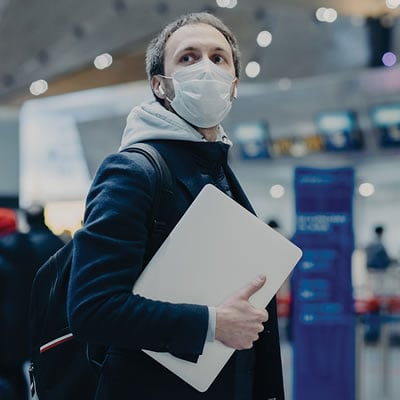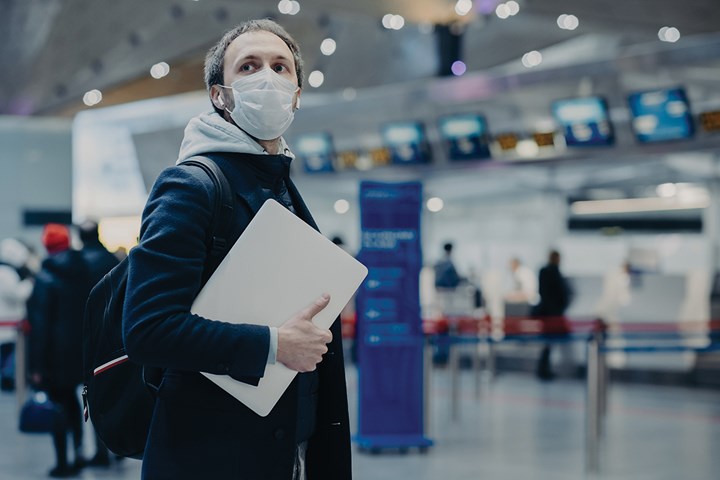In 2020 new vocabulary has seeped into global consciousness. From ‘new normal’ to the more practical yet equally disliked ‘social distancing’, the additions to this year’s dictionary paint a bleak, dystopian picture.
But in the last few weeks, fresh terms are being met with interest from wanderlust-stricken travelers and cautious optimism from governments and businesses hoping to rebound from the economic damage of COVID-19.
‘Travel bubbles’, ‘travel corridors’ and ‘air bridges’ are terms to describe formal agreements between governments allowing travelers to bypass strict quarantine measures based on the countries they travel between. It’s a simple but elegant idea to help combat the likelihood of COVID-19 resurgence, in particular second waves sparked by passengers arriving from high-risk regions.
As promising as this sounds, the practicality of protecting these bubbles is fraught with technical, operational, and governmental challenges.
Safer and restricted zones
 As countries begin to ease air travel restrictions, they will be very mindful of preventing a resurgence of cases. Governments will therefore want to take a controlled manner to open up their borders and might take different approaches based on the risk profile for each travel corridor destination.
As countries begin to ease air travel restrictions, they will be very mindful of preventing a resurgence of cases. Governments will therefore want to take a controlled manner to open up their borders and might take different approaches based on the risk profile for each travel corridor destination.
Where the virus risk is low, we’re beginning to see specific regions wishing to allow movement within safer zones first, for example the trans-Tasman bubble between Australia and New Zealand which is being discussed. This will enable open travel between countries within the zone, although might still be subject to additional health checks and close monitoring to avoid the risk of outbreaks.
There are also countries deemed higher risk, where travel corridors might be restricted to certain categories of traveler or under strict conditions, for example the Singapore-China ‘fast lane’ corridor. These restricted travel corridors will allow some movement for critical travel, including sponsored business travel.
Both models require an information-driven approach based on real-time data and they need to be responsive to handle rapidly changing situations.
Layered approach
Many governments take a layered approach to border management, starting well in advance of travel. If they can identify high risk passengers and limit their travel, this will support airports and airlines relaxing some of the measures for lower risk passengers at the airport.
There are four primary steps in this layered approach:
The first is the visa or travel authorization process, where passengers apply for entry into a country. We can see that this requirement might increase due to the pandemic and that health information, or a health declaration, will be incorporated into these checks up to the point of departure. Travelers will be asked to confirm where they will be staying during the visit, and their travel within country might be restricted to minimize any risk of movement into higher risk areas. This also supports the passenger by providing clarity and enabling them to plan their travel.
The second step is about collecting Advance Passenger Information (API) and travel booking data, or PNR data as it’s called, from the airlines before travel. This enables the government to do additional risk assessments, including whether the passengers are traveling from high risk areas. We don’t see that health information will be incorporated into this data in the short term, but this might be something that happens in the future. This will require governments to come together with the airlines to define standards in this area.
Risk assessment
The third, and maybe most critical step, is at the point of check-in, where the government can pre-clear a passenger to fly in real-time. Governments who have an Advance Passenger Processing, or interactive API, solution in place can deny boarding of a passenger who is deemed high risk, or for example, has not completed the mandatory health declarations.
We’ve been supporting governments around the world in adapting their Advance Passenger Processing pre-clearance checks in response to COVID-19. For example, during the early part of the pandemic we enabled governments to stop passengers from high risk countries check-in to their flights, limiting the spread of the virus.
The final step is on arrival at the destination airport and at the border control point itself. In the airport terminal we should expect to see special lanes and social distancing management to ensure travelers from different corridors, or risk levels, avoid coming into contact with each other.
Low risk passengers should be able to travel through the airport and across the border in a seamless, low-touch way using biometrics and mobile technologies, without the need for excessive queuing at immigration, which by itself can add to the risk. Travelers using restricted corridors might be asked to undertake additional screening or testing on arrival.
Post-travel, governments can also use the information collected to provide passenger outreach support by identifying passengers who might have come into contact with someone with the virus during their journey.
For example, they will have data on where people were sitting on the aircraft, as well as their contact information to trace them and request them to isolate or go for testing, if they were sitting near someone who subsequently was identified as having the virus. The risk status of the travel corridor can also be re-assessed in real-time using this data, enabling countries to react quickly if an outbreak occurs.
Trust and collaboration
Collaboration between governments, airports and airlines will be vital for travel corridors to work effectively. They will be placing trust in each other to ensure risks are managed effectively, and real-time data is required to respond to issues with speed.
Standards are also important to ensure all stakeholders are working in the same way and data privacy is protected – we’re handling sensitive information, including potentially data about people’s health, and therefore we need to ensure all data sharing has a legitimate use and data is only retained for as long as necessary.
While traveling in 2020 and beyond will be a different experience for all, there is some hope the new environment can steer us all towards a future featuring safe and seamless air travel.
For More
- SITA’s latest border white paper: Border Solutions to Mitigate Public Health Risks.
- Listen to the on-demand Air Transport World Webinar with speakers Jeremy Springall, Vice President, Vice-President Border Management, SITA, Sebastien Fabre, Vice-President Airline & Airport, SITA, Erick Barboza, Chief Commercial Officer at Aeris Holding, Costa Rica and Ivan Bassato, Executive Vice President Airport Management, Aeroporti di Roma.





 Share
Share






0 Comments